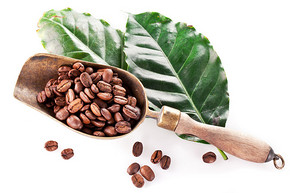Ethiopian coffee producing area, Ethiopian coffee introduction
Follow the caf é (Wechat official account vdailycom) and found that Beautiful Cafe opened a small shop of its own.
There are more than 140 varieties of coffee in Ethiopia
Ethiopia in East Africa means "land inhabited by people tanned by the sun" in ancient Greek. Ethiopia's unique cultural tradition, spectacular scenery, pleasant climate, rich animal and plant resources, important places of interest, hospitality and friendly people make it one of the major tourist destinations in Africa.
The name Coffee comes from kaffa in Ethiopia.
Do you know? The root of coffee is in Ethiopia. It is said that the word coffee in English also comes from the place name "Kaffa" in Ethiopia. Legend has it that around 900 AD, when a shepherd in the Cafa region of Ethiopia was grazing in the mountains, he found that the sheep were competing for a kind of red berries. After eating, the sheep were excited and reacted abnormally. The shepherd was scared all night because he thought his sheep had eaten some harmful food. Who knew the sheep were safe and sound the next day. This unexpected discovery prompted shepherds to collect the wild fruit and boil juice to quench their thirst. He felt that the fruit juice was mellow and excited after drinking it. So he began to plant this plant, which led to the development of large-scale coffee cultivation, and the name of coffee evolved from the curry method. After that, coffee spread from Ethiopia to the world.

Coffee is as pure as a thoroughbred.
Ethiopia grows coffee in different climatic zones, so it has more than 140 farm varieties, and fresh coffee is produced all the year round. The quality of Ethiopian coffee varies according to different elevations and regional ecological environment. The Harar coffee in the southeast highland is a typical Muha coffee with strong aroma; the coffee produced in southwest Wollega has a rich fruity flavor; Limu coffee has wine and spice flavor; Sidamo coffee is mild, full-bodied and sour, while Yirgacheffee coffee has floral flavor. Taste Yega Xuefei, chocolate and sour taste more intense, like lemon flying, with a trance of flowers.
Interestingly, Ethiopians also put pictures of horses on the coffee package to show the purity of the coffee. It is said that in the era when horses were the main means of transportation, Ethiopians were proud that Ethiopia had the best thoroughbred horses in the world. Now they give this pride to Ethiopian coffee, "high-quality coffee should be as pure as thoroughbred horses". As a result of adhering to this concept, the taste of coffee here is still so mellow.
Ethiopia: the original taste of coffee
Annual output: 396000 tons
"the delicate floral and sweet fruit flavor that can be brought out by a cup of water washed by Yirgacheffe is unparalleled, or sun-treated Sidamo, sweet and atmospheric, is the most classic top representative of Ethiopian coffee."
-- Lorenzo Perkins, Director of Education, Cuv é e Coffee
Ethiopia is the birthplace of the famous Arabica coffee beans, and people have always maintained the tradition of harvesting wild coffee beans. The coffee garden with an elevation of more than 1500 meters has formed a unique coffee style after more than a thousand years of evolution and adaptation. Ethiopian coffee grown in the natural wild environment is called "wilderness coffee". It retains the most primitive and natural taste of coffee beans and has the most direct and full expression of the local environment.
It is worth mentioning that most of the coffee in Central and South America is imported, but Ethiopia is a rare native place, and there are countless native wild varieties that have not yet been discovered.
Of the nine major coffee producing areas in Ethiopia, Hidamo and Yegashafi are the most outstanding. Yega Xuefei originally belongs to the sub-region of Hidamo, which is independent because of its special flavor. Because of its rich and complex fruit aroma, it has become an international hit almost overnight, becoming a hot target for experts and expensive.
Important Notice :
前街咖啡 FrontStreet Coffee has moved to new addredd:
FrontStreet Coffee Address: 315,Donghua East Road,GuangZhou
Tel:020 38364473
- Prev
The taste of Ethiopian Sidamo coffee beans introduces the flavor characteristics and stories of Ethiopian coffee.
Following Cafe (Wechat official account vdailycom) found that Starbucks Ethiopian Coffee has opened a small shop of its own: blessing from the birthplace of coffee. If coffee is a gift from Ethiopia to the world, then Starbucks' latest Ethiopian coffee is Starbucks' great respect for the birthplace of coffee as a leader in the coffee industry.
- Next

Ethiopian coffee characteristics, Ethiopian coffee culture
Following caf é (Wechat official account vdailycom) found that Beautiful Cafe opened a small shop of its own. Ethiopia is the first country in the world to grow coffee and maintain the oldest coffee culture. It can be said to be the origin of origins, the birthplace of coffee. According to statistics, the country produces about 396000 tons of coffee every year. It can be said that all the coffee varieties in other coffee producing areas
Related
- Detailed explanation of Jadeite planting Land in Panamanian Jadeite Manor introduction to the grading system of Jadeite competitive bidding, Red bid, Green bid and Rose Summer
- Story of Coffee planting in Brenka region of Costa Rica Stonehenge Manor anaerobic heavy honey treatment of flavor mouth
- What's on the barrel of Blue Mountain Coffee beans?
- Can American coffee also pull flowers? How to use hot American style to pull out a good-looking pattern?
- Can you make a cold extract with coffee beans? What is the right proportion for cold-extracted coffee formula?
- Indonesian PWN Gold Mandrine Coffee Origin Features Flavor How to Chong? Mandolin coffee is American.
- A brief introduction to the flavor characteristics of Brazilian yellow bourbon coffee beans
- What is the effect of different water quality on the flavor of cold-extracted coffee? What kind of water is best for brewing coffee?
- Why do you think of Rose Summer whenever you mention Panamanian coffee?
- Introduction to the characteristics of authentic blue mountain coffee bean producing areas? What is the CIB Coffee Authority in Jamaica?

